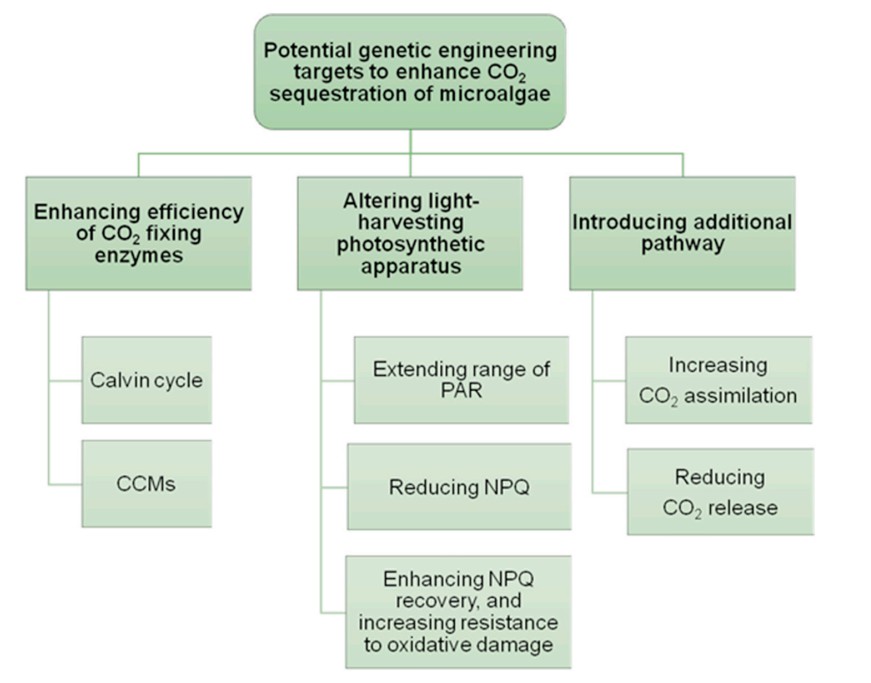Photosynthetic microalgae are emerging as potential biomass feedstocks for the sustainable production of biofuels and value-added bioproducts. Enhancing CO2 fixation by improving photosynthetic efficiency is a crucial process to increase biomass production from microalgae. Here, Lifeasible offers specialized solutions for the genetic engineering of microalgae to improve photosynthetic efficiency.
Global warming caused by the rapid increase of CO2 in the atmosphere poses a significant challenge for global sustainability. In recent years, green microalgae with unique advantages have emerged as potential candidates for CO2 mitigation in a sustainable low-carbon economy. Many green microalgae species are often well tolerated to high levels of CO2 and can efficiently fix CO2 from different sources in an eco-friendly manner. In addition, they can combine the renewable process of photosynthetic CO2 fixation with the production of value-added bioactive compounds from microalgae under controlled conditions, thus offsetting the mitigation costs of economic sustainability. However, green microalgae-based CO2 strategies are limited by the relatively low photosynthetic capacity inherent in green microalgae. Genetic engineering of microalgae to improve photosynthetic efficiency for enhanced CO2 fixation is an essential strategy for conducting biomass production.
 Fig 1. The overview of approaches to improve CO2 sequestration of microalgae. (Barati B, et al., 2021)
Fig 1. The overview of approaches to improve CO2 sequestration of microalgae. (Barati B, et al., 2021)
Improving photosynthesis is essential to increase both biomass productivity and CO2 fixation efficiency. Improvements in photosynthesis are often achieved by increasing the efficiency of enzymes involved in CO2 fixation. Lifeasible has been working on the transformation of new genetic constructs of microalgae to improve photosynthetic efficiency. Our skilled scientists have transformed and gene-edited to achieve more efficient pathways and enzymes to replace existing carbon fixation pathways to increase CO2 assimilation and reduce the release of captured CO2.
We offer the following three main potential targets to improve CO2 fixation by microalgae through genetic engineering:
(1) Increase the efficiency of the CO2 fixation pathway.
(2) Altering the energy harvesting complex.
(3) Introducing additional carbon fixation pathways to reduce CO2 and energy loss.
At Lifeasible, we can quickly help you overexpress or knock out enzymes involved in photosynthesis to improve CO2 sequestration by microalgae for viable biomass production and biofuel production. We are your trusted partner in all aspects of microalgae research. If you are interested in our solutions for the genetic engineering of microalgae to improve photosynthetic efficiency, please do not hesitate to contact us.
Reference